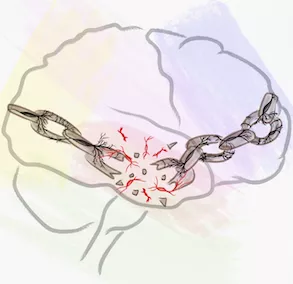
A hallmark of neurodegenerative diseases is that specific neurons are vulnerable, whereas others are resilient. While selectively vulnerable neurons are well-characterized for Parkinson’s Disease and ALS, much less is known about those neurons most vulnerable to Alzheimer’s Disease, the most common neurodegenerative disease.
In a study published today in Nature Neuroscience, we identified the molecular signature of neurons selectively to Alzheimer’s Disease. In a collaboration with Dr. Lea Grinberg’s lab at UCSF, led by Kampmann lab students Kun Leng and Emmy Li, we used single-nucleus RNA sequencing in post-mortem human brain samples to uncover neuron populations that accumulate tau pathology and die early in disease.
Future work will test which of the factors expressed by these vulnerable neurons cause vulnerability, using the CRISPR-based functional genomics platform in neurons developed previously by the Kampmann lab. Such factors are potential therapeutic targets to turn vulnerable neurons into resilient neurons in Alzheimer’s Disease.
Read the UCSF news release here.
Reference:
Kun Leng*, Emmy Li*, Rana Eser, Antonia Piergies, Rene Sit, Michelle Tan, Norma Neff, Song Hua Li, Roberta Diehl Rodriguez, Claudia Kimie Suemoto, Renata Elaine Paraizo Leite, Carlos A. Pasqualucci, William W. Seeley, Salvatore Spina, Helmut Heinsen, Lea T. Grinberg+, Martin Kampmann+. Molecular characterization of selectively vulnerable neurons in Alzheimer’s disease. Nature Neuroscience (2021). https://doi.org/10.1038/s41593-020-00764-7
* Equal contribution
+ Corresponding authors
(Image credit: Emmy Li, Kampmann lab)
